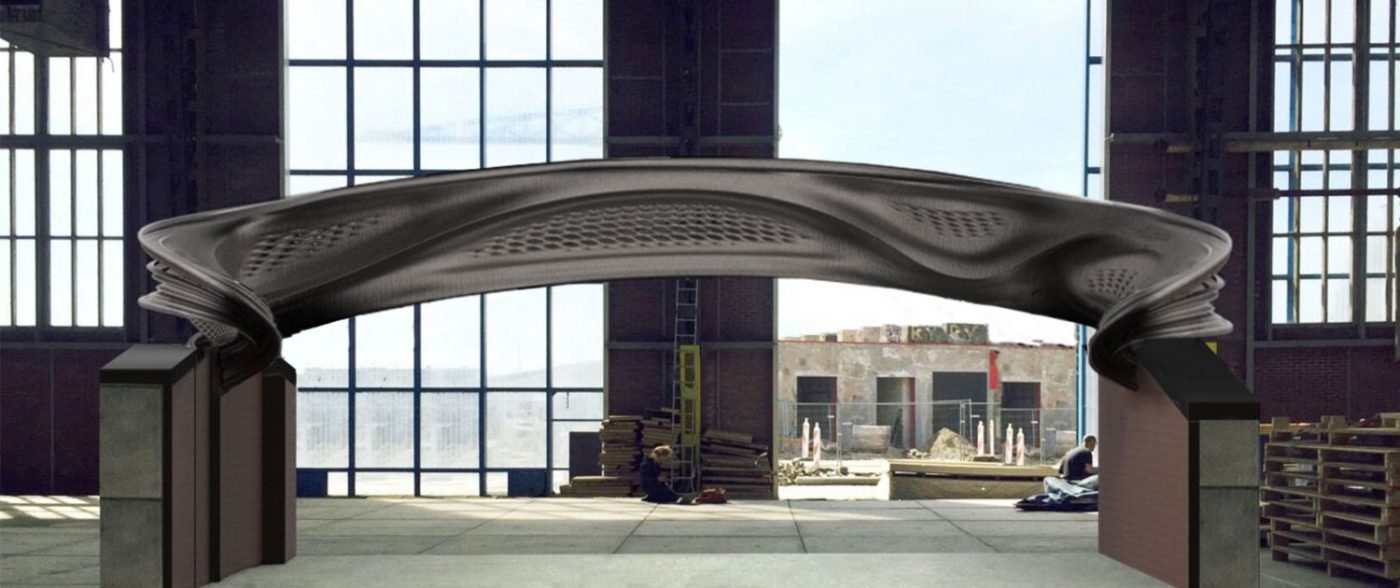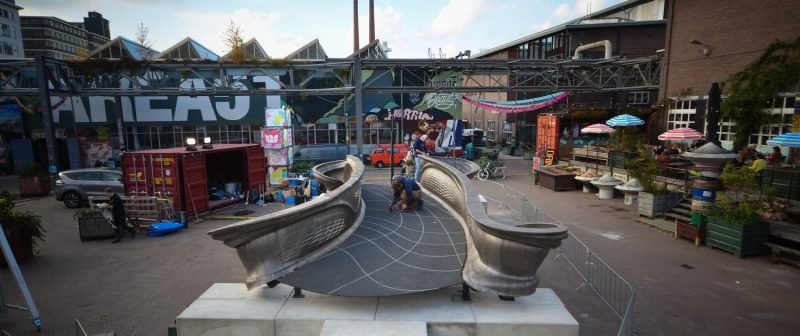First Ever 3D Printed Bridge to Be Installed in Amsterdam

Tech startup MX3D, specialized in robotic additive manufacturing technology, presented the world's first 3D printed stainless steel bridge at last week's Dutch Design Week. The groundbreaking technique opens up opportunities for large-scale application of 3D printed steel in the public realm.
The bridge is the result of a three-year research and development process by MX3D, which is a spin-off of Joris Laarman’s tech innovation lab. Laarman is a Dutch artist and designer well-known for his groundbreaking designs and pioneering technology in a variety of fields. The bridge (12,5 metres long, 6,3 metres wide) was ‘air-drawn’ by a set of six-axis robots using layers of molten steel. This 3D printer was designed by MX3D to allow the creation of organic shapes – in this case the wavy structure of the bridge. This makes the bridge unique as organic shapes are impossible to achieve in the traditional steel industry. In order to make the bridge happen, MX3D worked together closely with partners including Arup, ArcelorMittal, Imperial College London, and The Alan Turing Institute.
But the bridge is not just steel. It is fitted with a smart sensor system, monitoring the structure’s performance and collecting data with regard to strain, displacement and vibration as well as environmental factors including air quality and temperature. Over time, it will also measure how many people are crossing the bridge and at what pace. The resulting data will be fed into a ‘digital twin’ of the bridge, that responds to the data in real-time and will inform future 3D printed metal bridge designs. Apart from stainless steel, the technology could be used to process copper, bronze, and aluminum.


The design had its world premiere at last week’s Dutch Design Week in Eindhoven, where it won the Public Award. Visitors of the Dutch Design Awards exhibition voted for their favorite design of the year. The award is a follow-up of winning the Dutch Design Award in the category of Design Research last June. The jury praised MX3D’s leap into 3D printing research as it “opens the door, once and for all, to other (large and/or public) applications in architecture and the metal industry”.


While Dutch Design Week represented the design’s first showcase to the world, the municipality of Amsterdam will provide the bridge with a permanent location. In 2019, it will be installed to cross one of the oldest – and most notorious – canals in Amsterdam’s historic city centre: the Oudezijds Achterburgwal in the Red Light District. And if MX3D can help it, it will be the first of many 3D printed elements in public space. Earlier this year, the company announced a partnership with Haasnoot Bruggen to deliver 3D printed pedestrian and bicycle bridges to the Dutch market.
The innovation fits in with a number of experiments with 3D printing in spatial design. In April, MX3D’s partner Arup and Italian architecture studio CLS Architetti 3D printed a concrete house onsite during the Milan Design Week. The portable robot that was used was designed by Dutch manufacturer Cybe Construction. Earlier on Pop-Up City, we covered the large-scale efforts of the French city of Nantes with regard to 3D printed social housing. With the pace of innovation accelerating and its costs decreasing, it might not be long before 3D printing will be adopted as a cost-efficient, long-term solution for the housing market.



